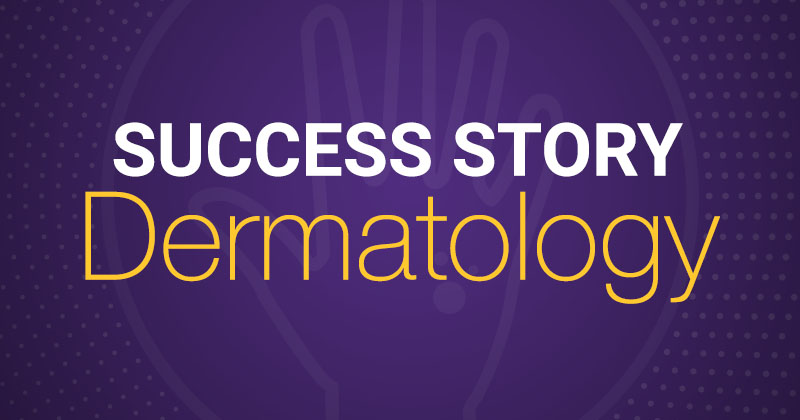Dermatology EHR System Helps Reduce Charting Times and Enhances Ease of Use for U.S. Dermatology Partners

Case Study

The Challenges
- Experienced a negative transition to ICD-10 with previous EHR
- Preferred an EHR system to use across a sweeping majority of practices
- Wanted a user-friendly dermatology EHR system
- Needed to migrate away from paper charts at some practices
Key Benefits Experienced
- Reduced charting time
- Maintained consistent operations and clinical services during EHR implementation
- Boosted patient interaction
- Increased accessibility and mobility with the cloud
Physician-owned dermatology practice opts for top-rated electronic health record.

“From a clinical standpoint, I love EMA. My charting time has been reduced by 50-75 percent, giving me more time to answer emails and perform other tasks.”
‒ DR. JENNIFER HOLMAN, BOARD-CERTIFIED DERMATOLOGIST AND FELLOW OF THE AMERICAN ACADEMY OF DERMATOLOGY
Getting On Board With the Dermatology EHR, EMA
With 98 clinics, 263 providers and offices in nine states, U.S. Dermatology Partners is one of the largest physician-owned dermatology practice in the United States. When the ICD-10 transition hit in 2015, their previous electronic health record (EHR) system could not keep up, and the group decided the time had come to make the switch to EMA™, the market-leading dermatology EHR.
Dr. Jennifer Holman’s Perspective – Center for Aesthetic and Laser Medicine and Tyler on Dominion Plaza Locations
We first started looking at Modernizing Medicine with the impending ICD-10 changes. When the initial transition with our previous EHR system’s ICD-10 upgrade was a disaster, we quickly moved forward with Modernizing Medicine and EMA.
We had a unique rollout because our Winnsboro and Longview, Texas offices had used EMA for quite some time, but the transition at our larger Tyler offices was a bigger project. The overall goal was to make the change without negatively impacting revenue.
In preparation, we hired a couple of data entry staff members to input clipboard and skin cancer history data into EMA. We went live in October with an initial key group, including nurses and myself, who had trained on EMA in 2015. Then, our clinical staff rotated, working with me from October to January, so they had exposure to EMA before other providers went live. Over the next three months, we gradually rolled out EMA to our providers. Our transition process was more provider specific versus location specific. I was very proud of our staff, as no clinical services or revenue were impacted by the transition, and most of our providers said the process was smooth and easy.
From a clinical standpoint, I love EMA. My charting time has been reduced by 50-75 percent, giving me more time to answer emails and perform other tasks. Previously, we used a digital camera to take photos to show our patients. Having the ability to now take those photos right on the iPad and upload them directly into a patient’s medical chart has been great.
Sarah Nguyen’s Perspective – Vice President of Systems Applications and Integrations
98 percent of our practices use EMA, as we see the value of being on the same platform and using the same EHR system across our multiple locations. For those who have been hesitant about making the switch, once they see a demo and hear about the benefits, they better understand why EMA is our preferred EHR vendor.
Before we made the transition, Modernizing Medicine’s trainers came to our practices to map the workflow using EMA. Each practice determined what would work best for them.
The cloud-based system is so helpful since the providers can access their charts from virtually anywhere, and it’s great from an IT perspective as well. The graphical user interface is easy to use and navigate for our providers. The coding suggestions in EMA has benefited our providers and regional clinical managers, too. After transitioning to EMA, we have found that most providers see the same numbers of patients, if not more.
Kristi Beatty’s, LVN, Perspective – Regional Clinical Manager
EMA has enhanced patient interaction since we take before and after photos of cosmetic procedures for comparison right on the iPad.
Additionally, EMA has helped tremendously with efficiency and workflow. Previously, some of our offices were on paper. Now, we can document benign lesions with one tap on the iPad. We have the ability to sign consents and take photos that directly attach to the visit. Features like adaptive learning and Protocols also help make charting faster.